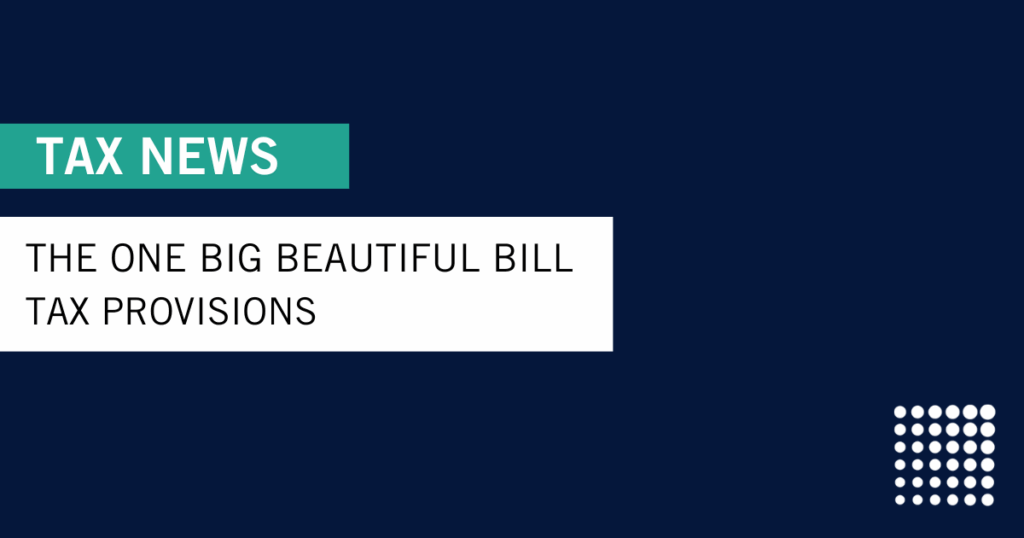Updates on the PPP Program Extension, PPP Application, & Other Legislation
In a recent blog post, we highlighted the major legislation changes the Paycheck Protection Program Flexibility Act (PPPFA) made to the CARES Act-created Paycheck Protection Program (PPP). On June 5, President Trump signed the PPPFA into law, giving businesses more flexibility in how they can use their PPP proceeds, most notably, allowing for more time to use the funds and rehire employees.
Similar to the rollout of the PPP program, each round of additional guidance introduces additional ambiguities and potential conflicts with previous guidance. As a result, borrowers should be prepared for continuing changes to the PPPFA guidance as well.
We expect additional guidance to be released in the form of further interim final rules (IFRs) and Small Business Administration (SBA) FAQs, which should provide more clarity. In addition, due to changes made by the PPPFA, we expect the Treasury & SBA to issue a modified loan forgiveness application (along with a change in the due date of the forgiveness application).
The following summarizes what we know today based on current guidance:
Covered Period Extension
The PPPFA extends the covered period to 24 weeks from the original 8 weeks. The longer covered period is automatic, unless the borrower elects otherwise. For PPP loans issued prior to the PPPFA enactment, borrowers can choose to remain on the 8-week covered period versus using the automatic new 24-week period, if it makes more financial sense for their business. For CWA small business owners, the 24-week period almost always makes more sense than opting to choose the 8-week original covered period.
Please note, although the covered period has been extended to 24 weeks, we do not believe owner-employees can be paid in excess of $15,384.62 ($100,000*8/52) for forgiveness purposes. This is an area of the bill that is still unclear.
Unless guidance is released specifically addressing this topic at a later date, we believe that wages paid to owner-employees will still be limited to $15,384.62. This should not be an issue for CWA clients, as they will have plenty of other forgivable expenses during the 24 weeks for which they can use the funds.
Change in Required Payroll-Related Use of Funds
The PPPFA also loosened up the required use of the funds for payroll expenses, changing it from 75% spent on payroll to 60% spent on payroll and 40% allowable for non-payroll expenses. This creates more opportunity for borrowers to use less of the funds for payroll-related costs and allows them to use more toward rent, utilities and loan interest.
However, now that the covered period has been extended to 24 weeks, this ratio is less important, since most borrowers should now be able to use these funds solely for payroll costs during the duration of the 24-week period.
With the first release of the PPPFA, there was lack of clarity around if the bill would disallow partial forgiveness (for example, if you used 59% for payroll costs then you would not qualify for any forgiveness); however, since then Secretary Mnuchin and the SBA clarified that partial loan forgiveness does apply if you do not meet the 60%/40% ratio.
Restoration of Full Time Equivalent (FTE) Count
The original rule for rehiring employees was that businesses had to restore their full-time equivalent (FTE) count by June 30, 2020, with an allowable exclusion for cases where the employer documented in writing an attempt to re-hire an employee who rejected this offer. The new law makes two significant changes to this original rule. First, the rehire date has been changed to Dec. 31, 2020. Second, it adds additional allowable exclusions for a reduced head count.
Those exclusions include:
- An inability to rehire employees who had been employed on Feb. 15, 2020, and;
- An inability to hire similarly qualified employees for unfilled positions by Dec. 31, 2020, or;
- An inability to return to the same level of business activity at which the borrower was operating before Feb. 15, 2020, due to compliance with certain federal agencies’ requirements or guidance; examples include social distancing, sanitation and health standards, or other worker or consumer safety requirements due to COVID-19.
It should be noted that the language of the additional FTE exclusions above is broad in nature and additional guidance could clarify this further.
FTE Rehire Period Option: As mentioned above, a borrower that secured the PPP loan before the PPPFA was enacted can opt to use the original 8-week forgiveness period. In this case, the FTE count must be restored by the end of that 8-week period. In most cases, it is unlikely a borrower would want to elect the shorter 8-week period, as it limits the borrower’s flexibility for qualification for forgiveness.
Payroll Tax Deferral
The PPPFA changed the provision to allow PPP borrowers to defer the payment of the employer portion of social security taxes for wages paid from the date of the CARES Act enactment to Dec. 31, 2020.
The deferral of these taxes would become payable as follows: 50% due by Dec. 31, 2021, and the remaining 50% due by Dec. 31, 2022. This could help businesses in a cash flow crunch; however, we caution clients to ensure they have the cash readily available to pay when they become due over the next two years. Clients should work with their payroll provider if they choose this option.
Extension of Unforgiven Loan Amounts
Another positive result of the PPPFA was to establish a minimum maturity of five years, versus the original loan term of two years. This change will help with the cash flow required by businesses that have unforgiven or unspent funds and choose not to immediately repay these amounts after forgiveness is determined.
Forgiveness Application
The good news is, there is nothing borrowers need to do right now regarding the forgiveness application, even once you have spent all of your funds. We anticipate there to be changes to the actual forgiveness application, along with its due date.
Most borrowers’ 24-week covered period will end sometime in late October or early November 2020. By that time, we expect to have much more clarification on how the forgiveness application will look and should be completed.
Of note, CWA clients will have the option to elect CWA to prepare this application. More details to follow as we receive more information on the application. In the interim, borrowers should continue to focus on keeping documentation organized on forgivable expenses.
What is clear is that Congress is working to loosen up the rules and ensure businesses are able to use the funds more freely in order to get back to operating their businesses.
We expect more guidance to come and will continue to provide updates as available.
If you have specific questions on the PPPFA changes to the PPP program that are not addressed above, please reach out to your CWA planning team.
Our advisors can help you sort through the uncertainty. Learn more about our services:














